Category: Ludwig Boltzmann Forum
-
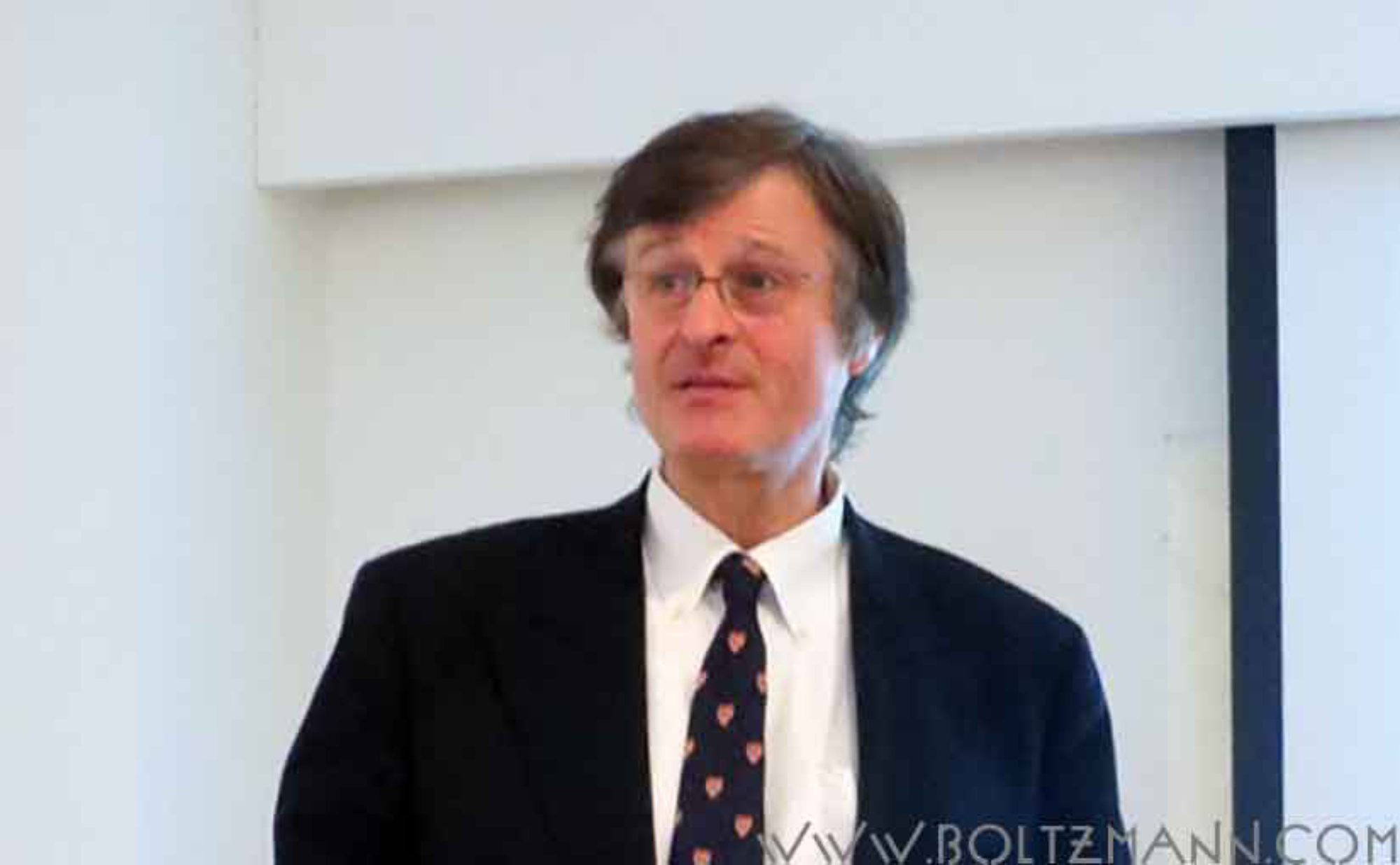
Gerhard Fasol: Ludwig Boltzmann’s life
Ludwig Boltzmann’s life – an overview Gerhard Fasol keynote talk given at the 8th Ludwig Boltzmann Forum at the Embassy of Austria, Tokyo, Thursday 18 February 2016 We use Ludwig Boltzmann’s results and tools every day by Gerhard Fasol Ludwig Boltzmann was born 20 February 1844 We use Ludwig Boltzmann’s results every day. Among Ludwig…
-

Shuji Nakamura: The invention of high efficiency LEDs and the impact on promoting innovation in Japan, and legal aspects
Shuji Nakamura, Nobel Prize in Physics 2014, Professor, University of California, Santa Barbara and Co-founder of Soraa Shuji Nakamura: bottom-up innovation, not top-down innovation. keynote talk given at the 8th Ludwig Boltzmann Forum at the Embassy of Austria, Tokyo, Thursday 18 February 2016 (summary of Shuji Nakamura’s talk – including some comments – by Gerhard…
-
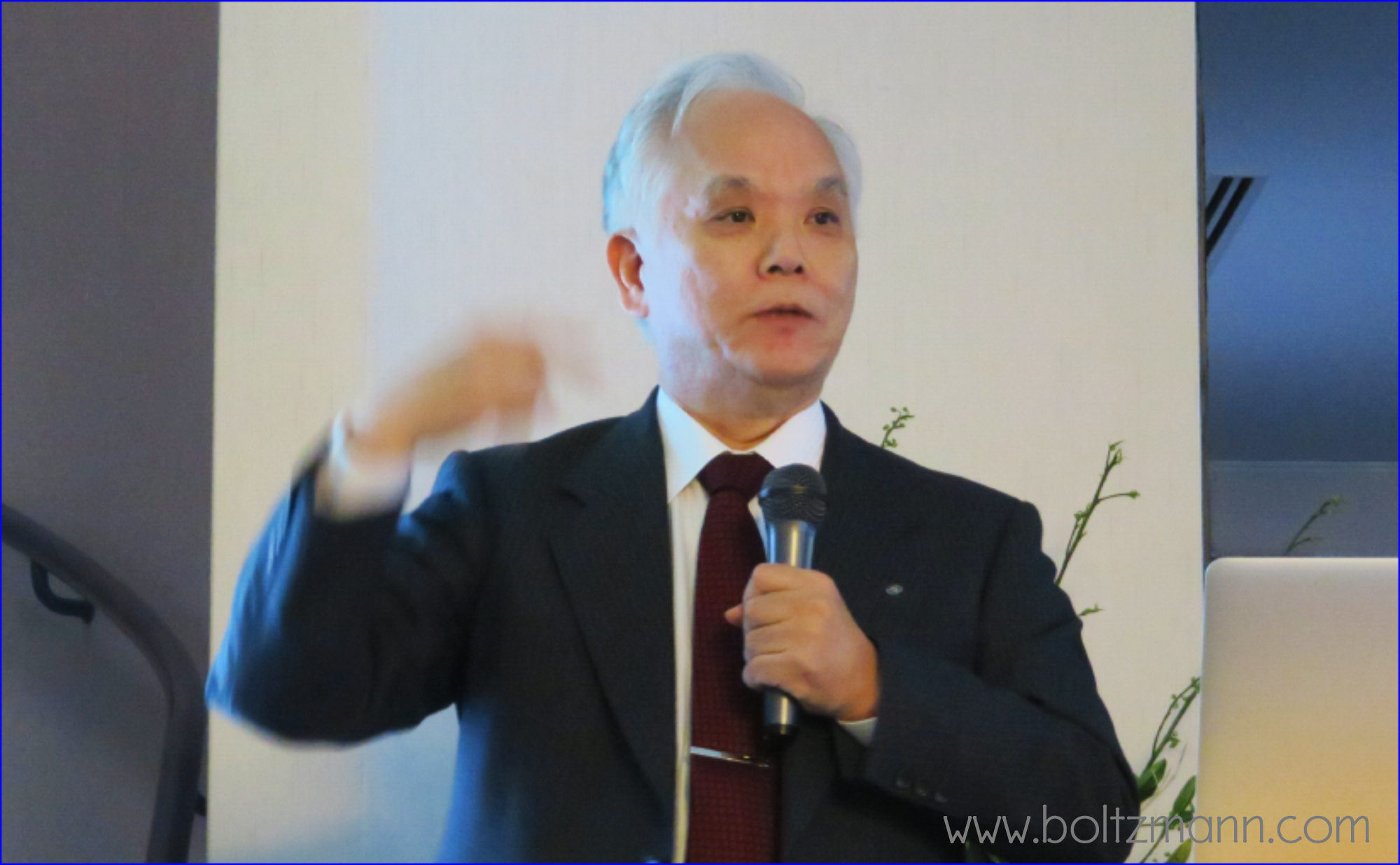
Michinari Hamaguchi: Creativity and human resource development. What we learn from Nagoya University’s Nobel Prize Winners and women researchers
Michinari Hamaguchi, President of Japan Science and Technology Agency (STA) (previously President of Nagoya University) keynote talk given at the 8th Ludwig Boltzmann Forum at the Embassy of Austria, Thursday 18 February 2016 by Michinari Hamaguchi, President Japan Science and Technology Agency (STA), President emeritus of Nagoya University summary written by Gerhard Fasol About Nagoya…
-
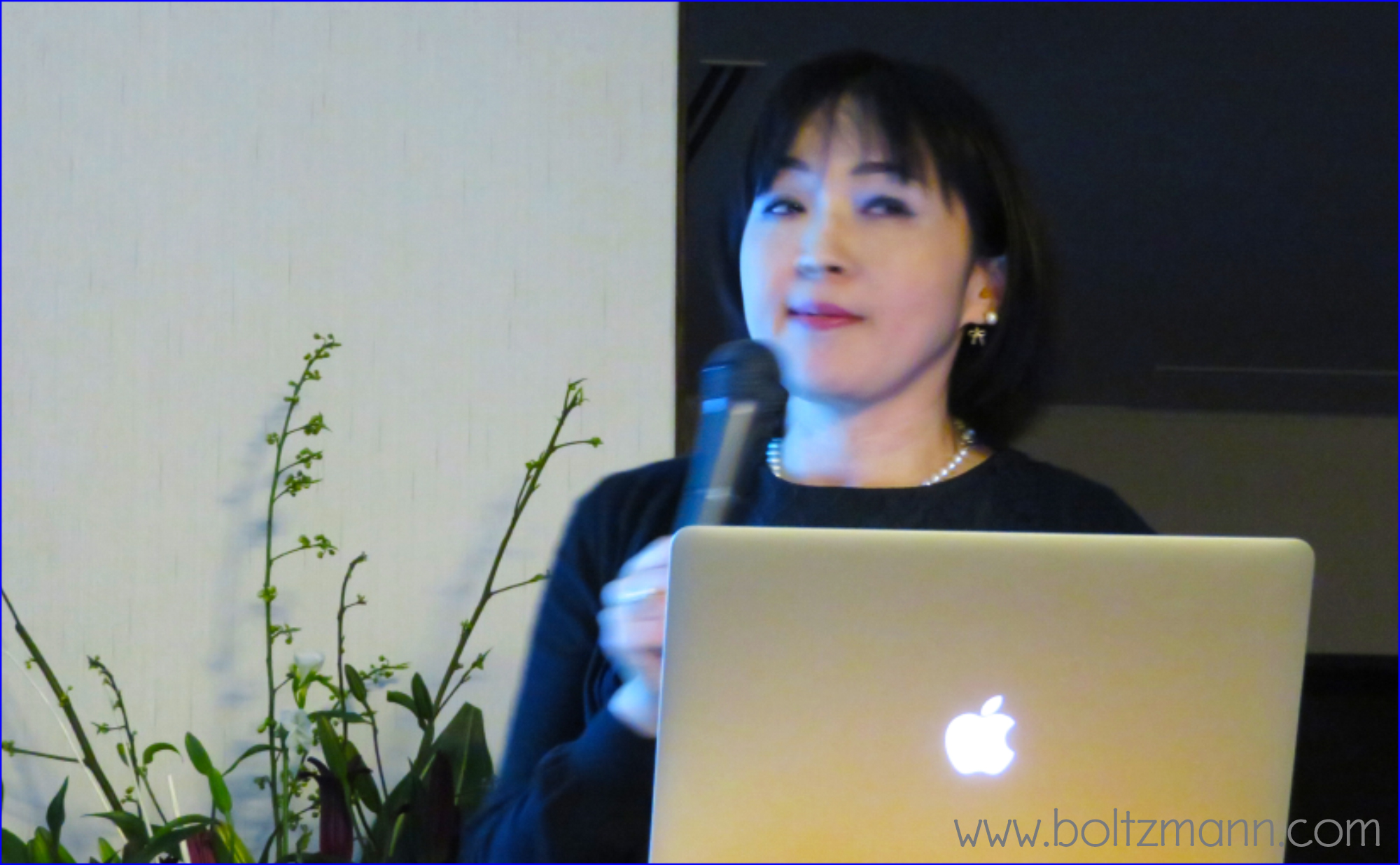
Kyoko Nomura: Gender inequality in Japan – a case report of women doctors
Gender inequality in Japan: a case report of women doctors Kyoko Nomura, MD, MPH, PhD keynote talk given at the 8th Ludwig Boltzmann Forum at the Embassy of Austria, Tokyo, Thursday 18 February 2016 [Japanese version 日本語版 野村恭子、医師・医学博士、日本の男女共同参画:女性医師を事例に] by: Kyoko Nomura, MD, MPH, PhD: Director, Support Center for women physicians and researchers, Associate professor, Department of…
-
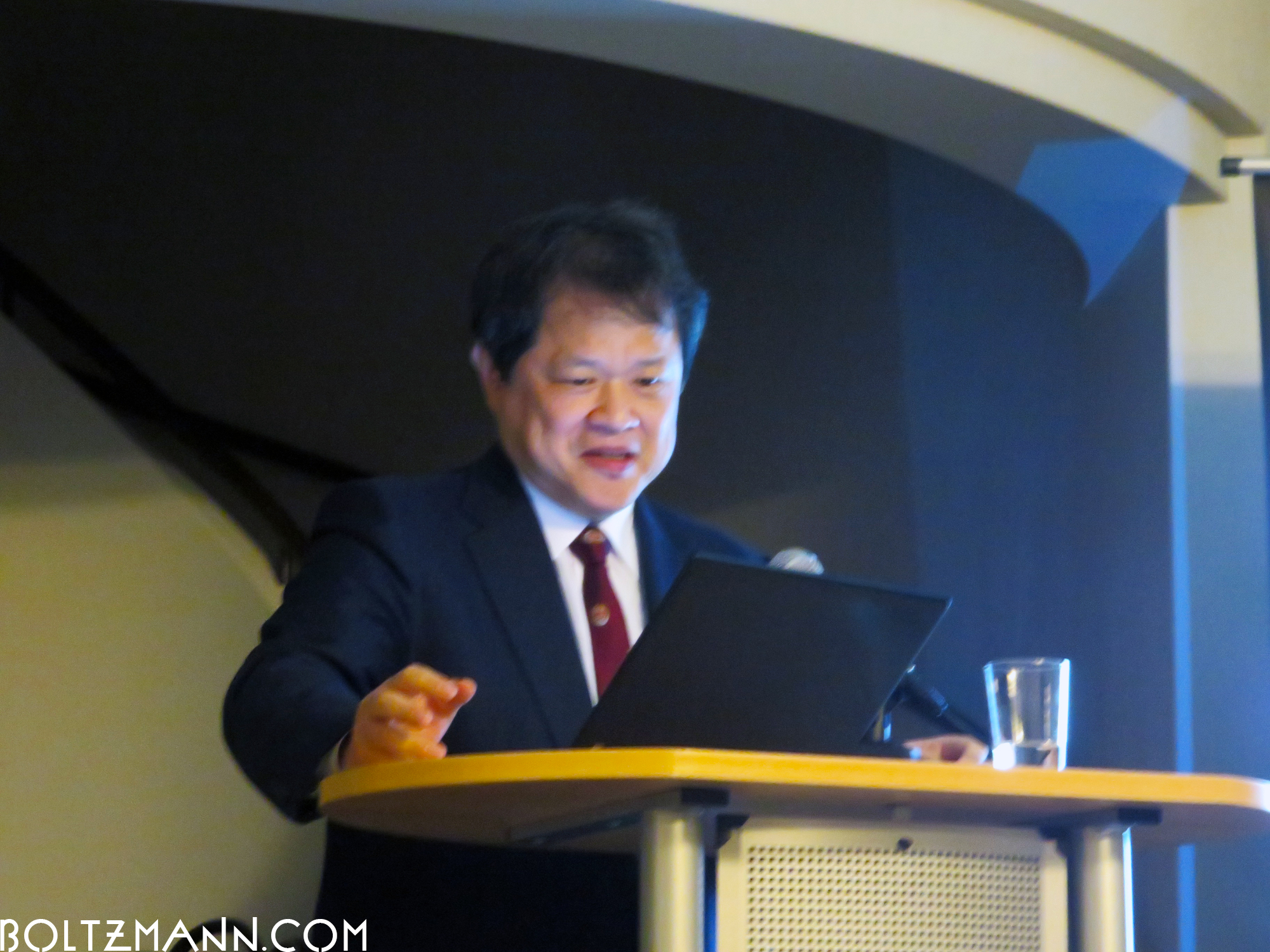
Makoto Suematsu: AMED Mission and perspectives to fast-track medical R&D
AMED missions start with IRUD: Initiative on Rare and Undiagnosed Diseases – Challenge to overcome Balkanization Makoto Suematsu keynote talk given at the 8th Ludwig Boltzmann Forum at the Embassy of Austria in Tokyo, Tuesday 18 February 2016 Makoto Suematsu, President, Japan Agency for Medical Research and Development AMED: “The situation in Japan is so…
-
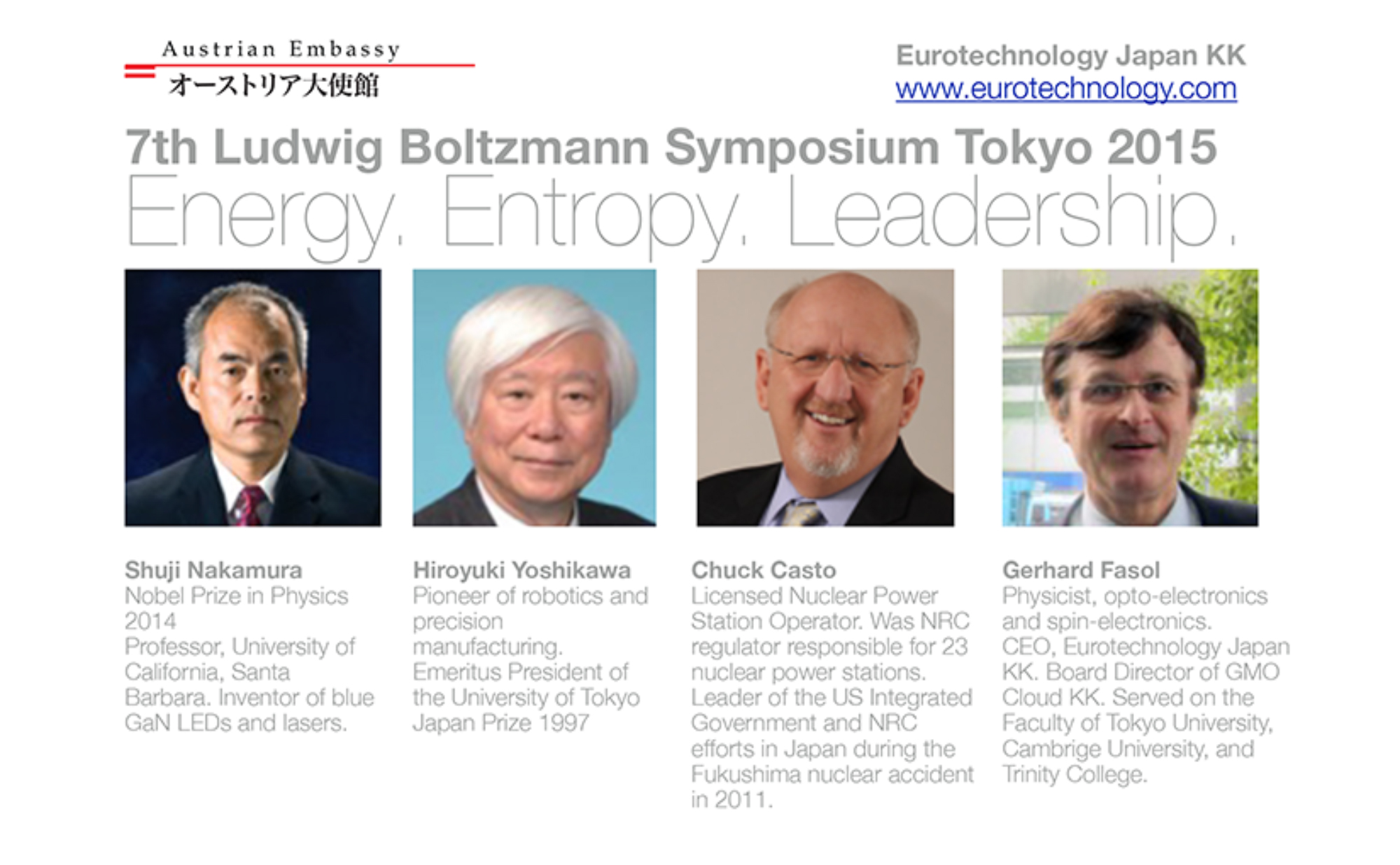
7th Ludwig Boltzmann Forum Tokyo 2015
7th Ludwig Boltzmann Forum: 20 February 2015 at the Embassy of Austria in Tokyo Gerhard Fasol, Chair One highlight of this year’s 7th Ludwig Boltzmann Forum was when Nobel Prize Winner Shuji Nakamura who’s invention of GaN LEDs eliminates the need to build thirty 1GW class nuclear power stations in the USA alone by 2030,…
-
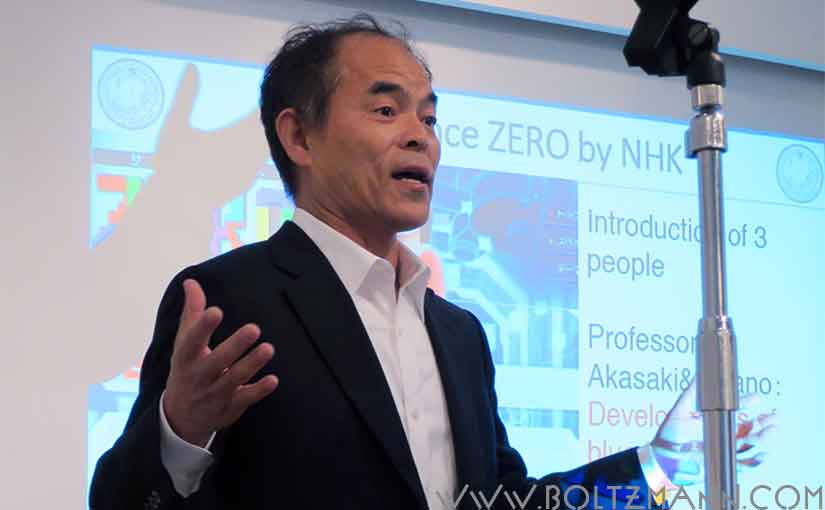
Shuji Nakamura: Developments of InGaN-based double hetero-structure high brightness blue LEDs and future lighting
Developments of InGaN-based double hetero-structure high brightness blue LEDs and future lighting Shuji Nakamura keynote talk given at the 7th Ludwig Boltzmann Forum, Austrian Embassy in Tokyo, 20th February 2015 by Shuji Nakamura, Nobel Prize in Physics 2014. Inventor of blue GaN LEDs and lasers. Professor, Solid State Lighting and Energy Electronics Center, Materials and…
-

Gerhard Fasol: Ludwig Boltzmann – the revolutionary, Boltzmann’s work, Boltzmann’s constant and entropy
Ludwig Boltzmann – the revolutionary, Boltzmann’s work, Boltzmann’s constant and entropy Gerhard Fasol keynote talk given at the 7th Ludwig Boltzmann Forum at the Embassy of Austria, Tokyo, 20 February 2015 by Gerhard Fasol, Physicist, opto-electronics and spin-electronics. CEO, Eurotechnology Japan KK. Board Director of GMO Cloud KK. Served on the Faculty of Tokyo University,…
-
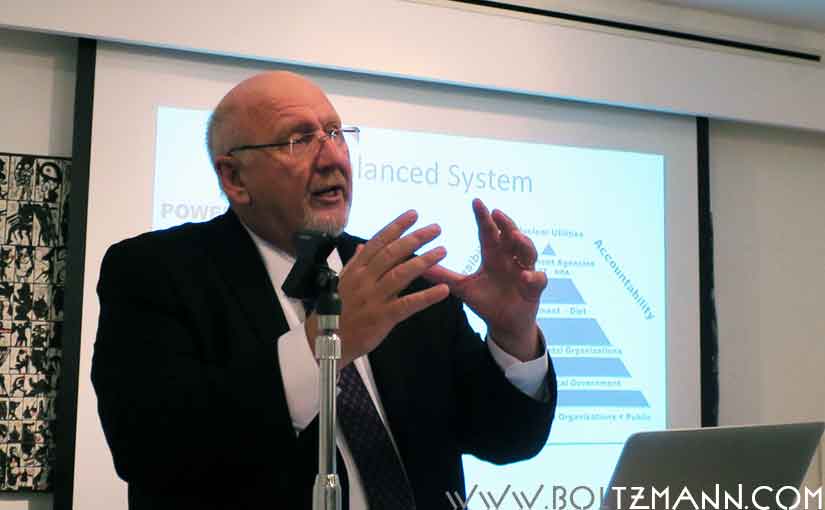
Chuck Casto: Global leadership in the extreme – crisis leadership in post-Fukushima
Global leadership in the extreme: crisis leadership in post-Fukushima Chuck Casto keynote talk given at the 7th Ludwig Boltzmann Forum at the Embassy of Austria, Tokyo, 20 February 2015 by: Dr. Chuck Casto, Casto Group Consulting LLC, Licensed Nuclear Power Station Operator. Was NRC regulator responsible for 23 nuclear power stations. Leader of the US…
-
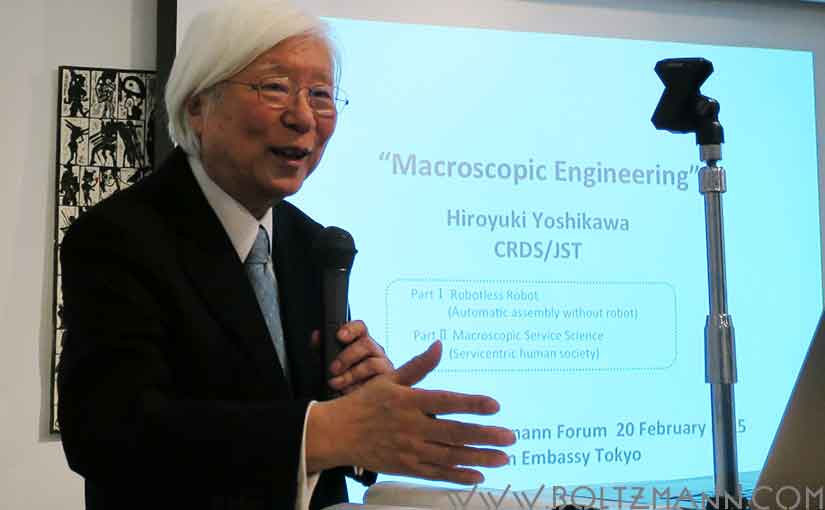
Hiroyuki Yoshikawa: Macroscopic Engineering
Macroscopic Engineering Hiroyuki Yoshikawa keynote talk given at the 7th Ludwig Boltzmann Forum, Tokyo, 20 February 2015 by Hiroyuki Yoshikawa, Pioneer of robotics and precision manufacturing, Emeritus President of the University of Tokyo, Japan Prize 1997 summary by Gerhard Fasol – discussions at the end of this page Part I: Robotless Robot (automatic assembly without…
-

6th Ludwig Boltzmann Forum Tokyo 2014
6th Ludwig Boltzmann Forum Tokyo 2014 – Energy. Entropy. Leadership. Gerhard Fasol, Chair 20 February 2014 at the Embassy of Austria in Tokyo Keynote speakers Program Welcome by Dr. Berhard Zimburg, Ambassador of Austria to Japan (represented by Peter Storer, Minister for Cultural Affairs) Gerhard Fasol: today’s agenda Today we celebrate Ludwig Boltzmann’s 170th birthday:…
-
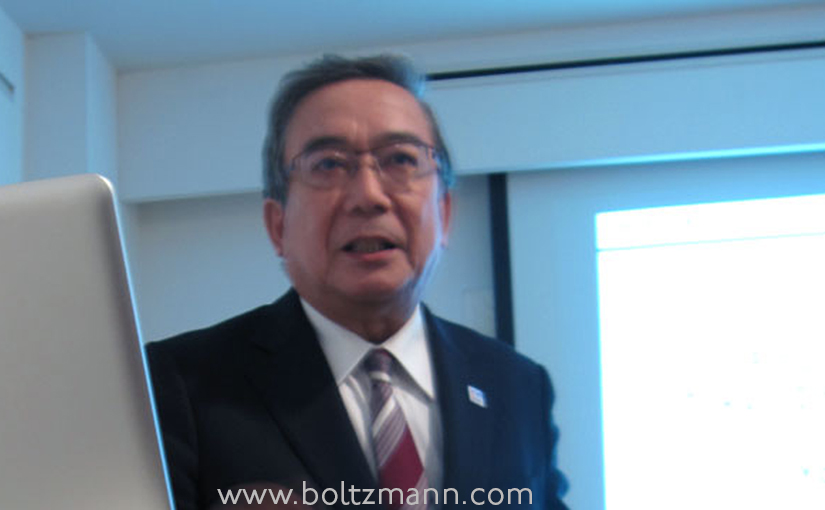
Yoshinao Mishima: “Tokyo Institute of Technology to become a world class University with more diversity by 2030”
Educational reforms at Tokyo Institute of Technology Yoshinao Mishima keynote talk given at the 6th Ludwig Boltzmann Forum, Embassy of Austria, Tokyo, 20 February 2014 by Yoshinao Mishima, President of Tokyo Institute of Technology. Materials scientist specialized on nano-materials and high-performance materials summary written by Gerhard Fasol Tokyo Institute of Technology – short history 1881:…
-
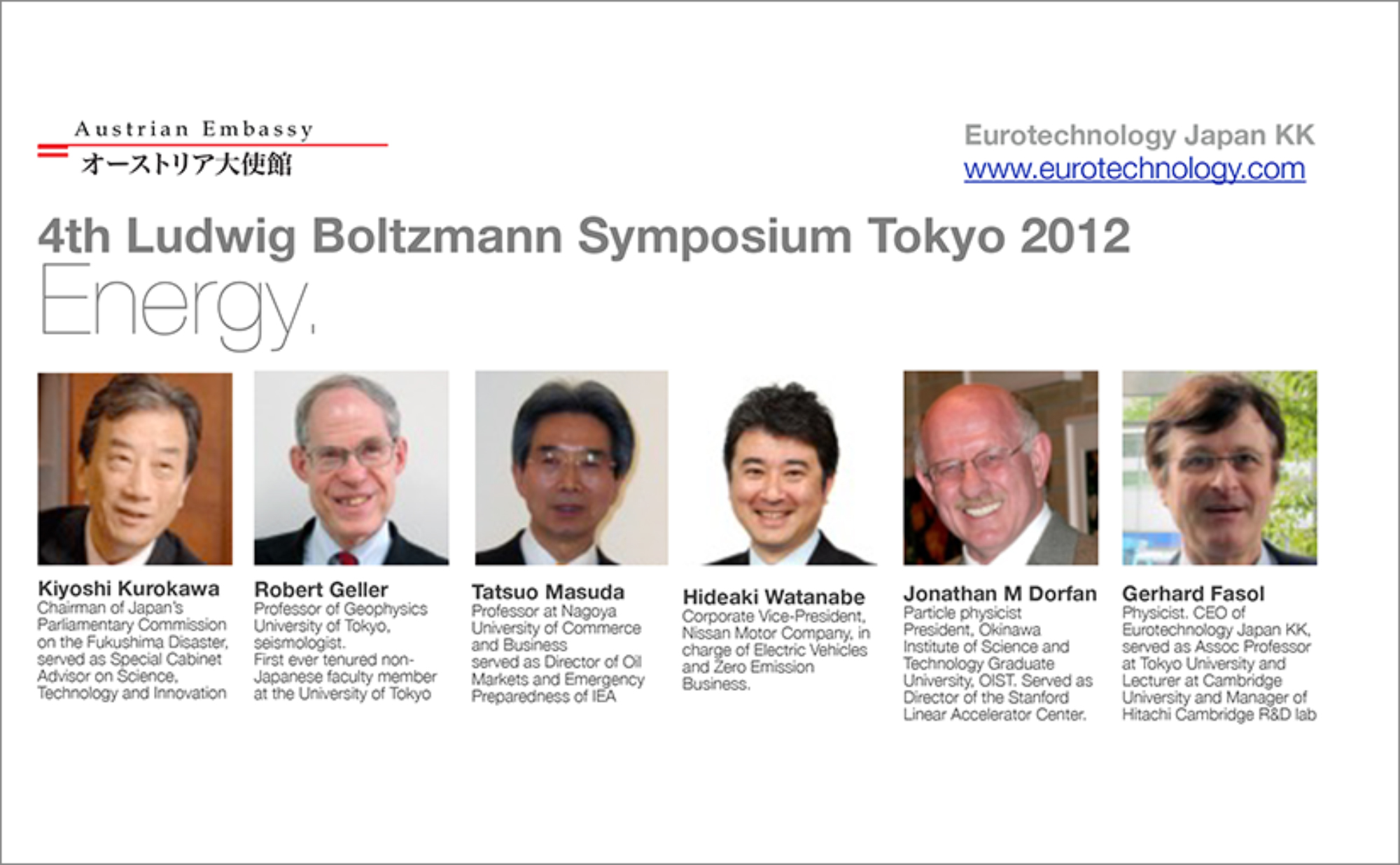
4th Ludwig Boltzmann Forum Tokyo 2012
Energy. Entropy. Leadership. Gerhard Fasol, Chair Monday, 20th February 2012 at the Embassy of Austria in Tokyo Ludwig Boltzmann Forum Tokyo 2012 – Program 14:00 Welcome by Thomas Loidl, Chargé d’affaires ad interim of the Austrian Embassy 14:10 Gerhard Fasol: today’s agenda” 14:20 – 14:40 Tatsuo Masuda Professor at Nagoya University of Commerce and Business,…
-
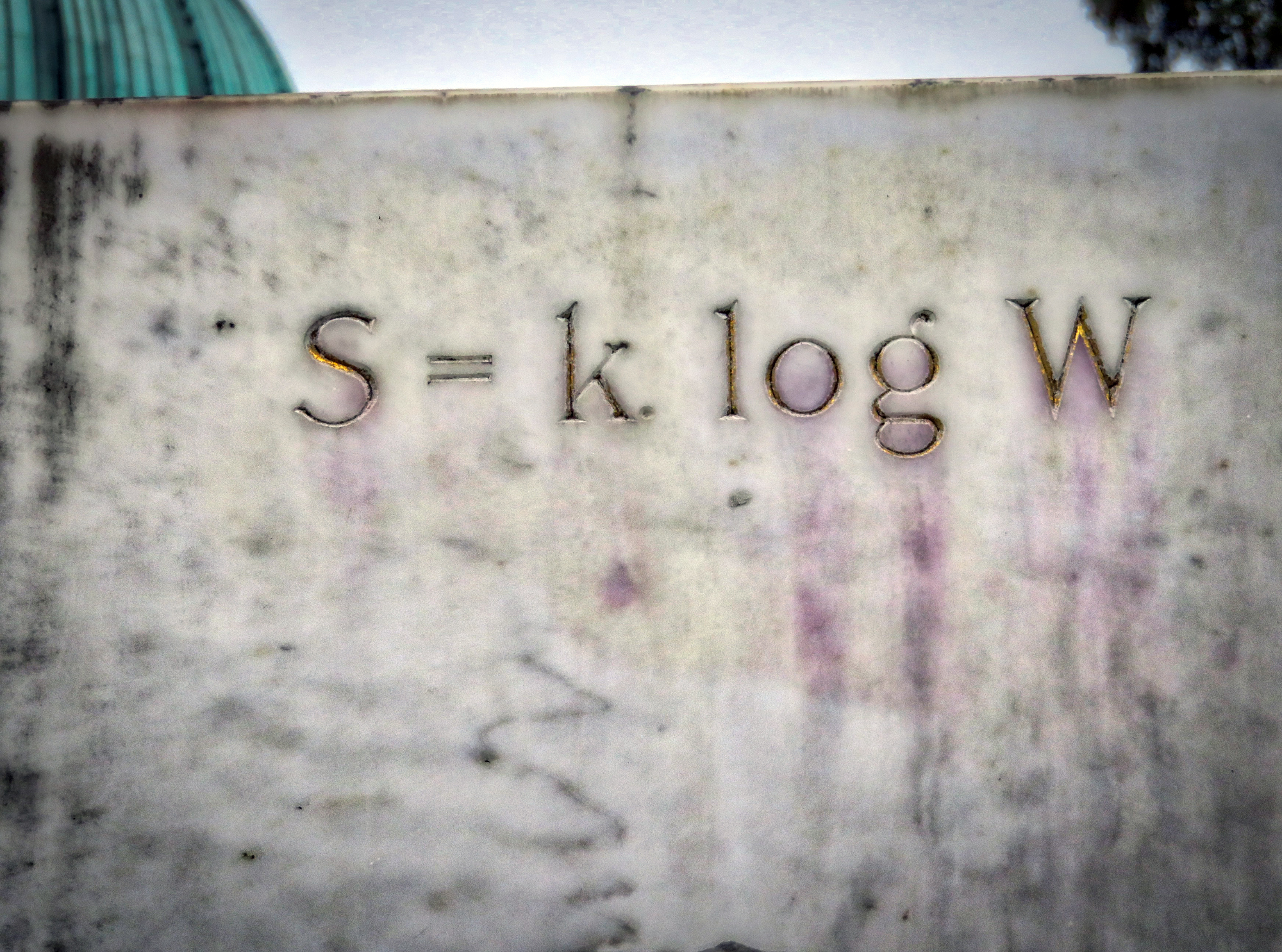
3rd Ludwig Boltzmann Forum Tokyo 2011
Topic “Space and Energy and Ludwig Boltzmann” Gerhard Fasol, Chair Thursday, 17th February 2011 at the Embassy of Austria in Tokyo Program Registration: latest 15 February 2011 Further information: Gerhard Fasol, Georg Poestinger, Counsellor, Austrian Embassy, Tel 03-3451-8281 Summary Gerhard Fasol: “Ludwig Boltzmann: Pioneer of understanding Space and Energy” Gerhard Fasol reviewed Ludwig Boltzmann’s pioneering…
-
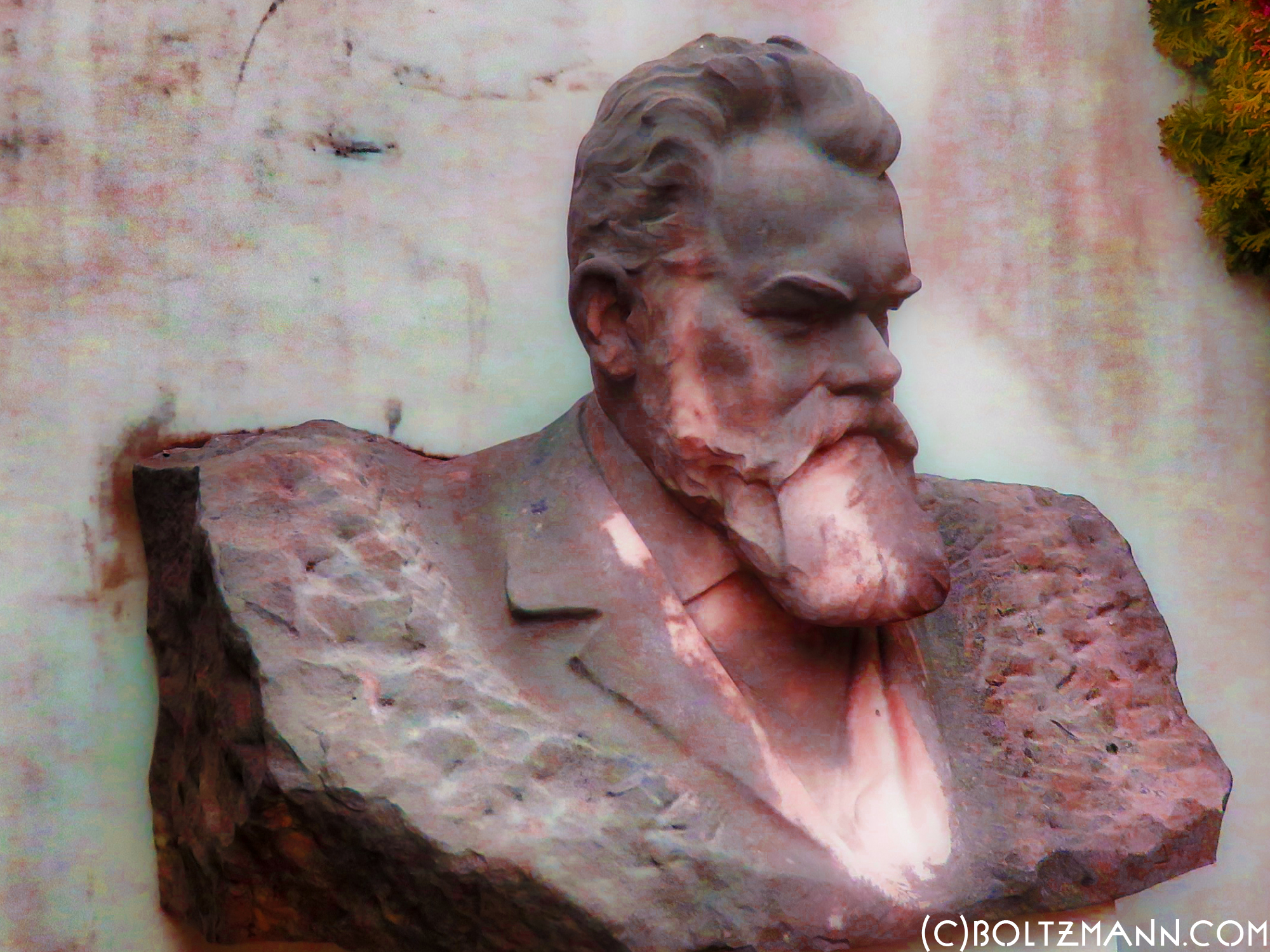
2nd Ludwig Boltzmann Forum Tokyo 2010
Topic “Leadership and Diversity” Gerhard Fasol, Chair Thursday, 18th February 2010 at the Embassy of Austria in Tokyo 14:00 Welcome by HE the Ambassador of Austria to Japan 14:10 – 14:40 Gerhard Fasol, “Ludwig Boltzmann as a local and global leader” 15:00 – 15:20 Atsuko Heshiki, MD and PhD President of Medical Woman’s International Association…
-
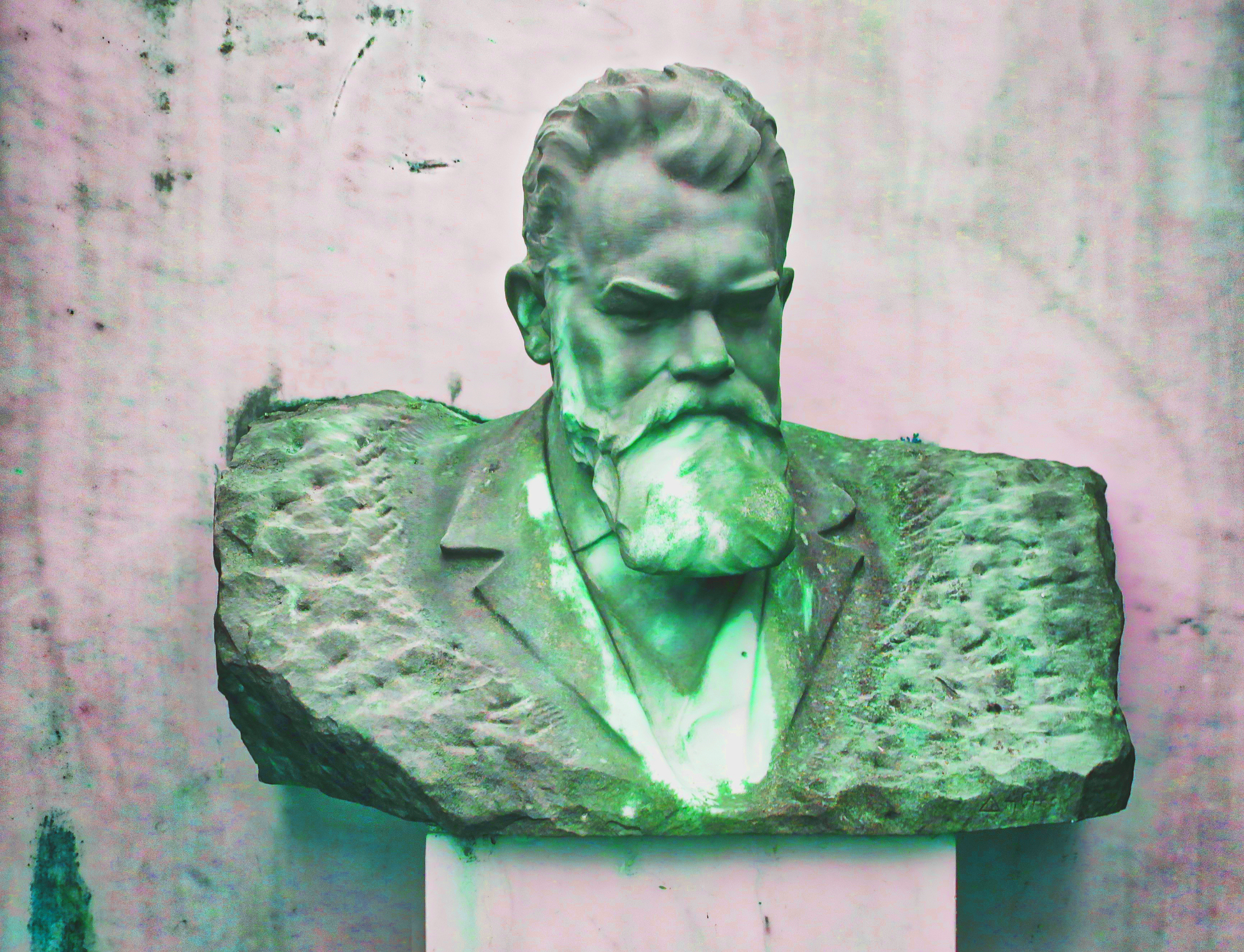
1st Ludwig Boltzmann Forum Tokyo 2009
Energy. Entropy. Leadership. Gerhard Fasol, Chair Friday, 20th February 2009 (Boltzmann’s birthday, 165 years ago) at the Embassy of Austria in Tokyo 14:00 Welcome by HE the Ambassador of Austria to Japan 14:05-14:35 Hisashi Kobayashi, Sherman Fairchild University Professor Emeritus, Princeton University, Executive Advisor, National Institute for Information and Communications Technology (NICT), Japan. “Ludwig Boltzmann:…